The Journals of Ayn Rand Read online
Page 25
VII
Summer. On the construction site. Roark-Dominique. Roark-Wynand encounter. One furious spurt of Wynand’s hatred for Roark. Wynand cancels the construction. [...]
[The events after Roark dynamites Cortlandt Homes are the same as those described in her “Plan for the Last Part” written on April 4.]
June 21, 1938
Chapter III
Francon’s office. Keating arrives for work—a little before 9 a.m. The entrance lobby of the office. The reception clerk. The employment manager. The drafting rooms. The head draftsman. Keating shown his locker, told a few brief instructions, put to work.
Keating tracing blue-prints. First nervousness. Then looking about, loses all fear of the men, knows he is better.
The great activity. Looks at the city. “It comes from here.”
Keating and the drawing. “Francon? No, so-and-so did it.”
The afternoon. Keating sent to Francon. Francon with a slight hangover. His brief talk with Keating about his, Francon‘s, duties. Leaving, Keating sees woman client in reception room.
Cameron’s past.
Roark comes to Cameron’s office. The office (overlooking one of Cameron’s buildings).
The interview. Roark ordered to come to work tomorrow.
Cameron’s reaction.
Roark looking at the streets.
Roark comes home. Vesta doing Joan D‘Arc. Roark-Vesta. His interest. Her reverent enthusiasm. Peter comes home. She changes, does a fool imitation. The dinner she has prepared.
Cameron—the austerity, the devotion, the tragedy.
Francon—big business (show, pompousness, kowtowing to clients, utter indifference to the reality of the work).
June 25, 1938
Chapter I
Roark in the mountains—his body, the earth around him, the complete ecstasy of the complete man, his thoughts on architecture and the material around him (nature as his clay to mold as he pleases). The swim. The fact that he has been expelled.
Roark on his way home: the interreaction of Roark and others around him.
Roark home. Mrs. Keating. First reference to Peter. Mrs. Keating’s quite obvious joy at Roark’s expulsion and her pride in Peter, her “sweetness” and her ferocious ambition, her hatred for Roark (and for every other student at the Institute). She tells Roark of Dean’s call.
Roark on his way up. Incident with Vesta’s closed door and her rebuff to him.
Roark in his room—his drawings. He forgets call. Mrs. Keating reminds him. He goes.
Interview between Roark-Dean. Establish why he’s been expelled. Lay a brief and clear foundation for the two basic opinions on architecture—Roark’s and the eclectics‘. The Dean’s mention of Cameron; Roark’s reaction. Roark’s background—where he came from, that he has worked as building constructor during his way through Institute. No friends, no fraternities. Roark’s utter, shattering indifference. “Your opinion, Mr. Roark, is not the most important thing that counts.” “It is the only thing.”
As Roark leaves, he is distracted by the stone in the Institute building—his thought as to what he would do with it.
[AR elaborates the above in the following notes.]
Rocks like a fortress wall, enclosing everything, a circle, a planet or world of its own. Rocks like a frozen explosion—a struggle, the harmony of conflict, the hard unity not of peaceful balance, but of opposite forces holding one another in check. Sharp angles, like clenched muscles, deep gashes like wounds worn as decorations, a million sparks in the granite, the rock flaming, a hard luster, the polish of heat, as if the air were a liquid, so dry that the stones seem wet with sunrays.
A few tufts of green—a luminous green tumbling in the wind, like green bonfires burning on the fuel of granite. One tree—as a banner, victorious over the rock, rising to proclaim its place in this world of stone. [This last sentence was crossed out.]
The lake—an enclosed canyon, quiet, guarded, mysterious. Cold, obviously cold even in its fire; in spite of it or because of it. Subterranean spring. No bottom. [The preceding three sentences were crossed out.]
A thin silver film cutting, midway, the walls of granite. A luminous bowl—lighting the sky. The sky—clear, blue with nothing, not a single cloud to give it limit or reality—as a mirror for the lake. The rocks continue into the depth and then there is the sky. So that the whole place seems suspended in space, with the sky below and above it, an island floating on nothing, a circle, a coral reef of the sky, anchored only by the two feet of the man on the rock.
The place is wild, untouched, no trace of the existence of men.
His laughter as the meaning of the earth around him, as its song, as the release of its tension. Triumphant, the complete ecstasy. (See Nietzsche about laughter.) [Elsewhere in her notes, AR copied the following from Thus Spoke Zarathustra: “O my brethren, I heard a laughter which was no human laughter—and now gnaweth a thirst at me, a longing that is never allayed. My longing for that laughter gnaweth at me: oh, how can I still endure to live! And how could I endure to die at present! ”]
It’s the lines of his body that give meaning to the struggle around him, it’s the struggle known and possible to his muscles, to his veins, to the thin lines beating under his skin.
The township of Stanton began with a dump. Billboards advertising soap and gasoline. A church—carpenter Gothic with spire à la Wren. Streets—all alike and all awful. Consumptive, public, tight little houses, “fancy” architecture with the paint peeling. Garbage can. Diapers on a line. A pampered dog on a cushion. A man’s behind—planting nasturtiums. A woman sprawled, legs spread apart, on a porch. A woman pushing a perambulator and wiping the sweat off with the back of her hand.
Roark amidst it. Everyone looks at his hair. Most people turn away too quickly. Some stare with a blind, nameless, instinctive hatred. All uncomfortable. The alien. What had been joy in him is now arrogance, what had been strength is now a challenge, what had been freedom is a nameless threat. As to him—he sees no one. He walks, as he swam, straight to a given point. For him the street is empty. He could have walked there naked without concern.
Main square—shops about a lawn, a movie theater in competition with the stock theater. Signs in shop windows welcoming the “Class of ‘22,” which is graduating today. He turns off into a side street at the end of which, on a knoll, stands the house of Mrs. Keating over a green ravine.
Roark versus the eclectics. (“Have you thought of clients?” “Yes, I have thought of clients. I do not presume to consider myself the only man of good taste in the world.”) Mention of Cameron.
Lead up to his utter selfishness. Dean mentions that he has no friends, has refused to join fraternities. “Won’t you reconsider? You have worked hard for your education.” (Sketch his past.) “No, I won’t reconsider.” Whom to notify? No one. No parents. No guardians. Who was his father? He has no one now.
“We have decided. I believe, as was stated at this morning’s meeting, that the profession is not for you. You’re giving it up, aren’t you?”
“Oh, no. I’m just beginning.”
“Who’ll give you work?”
“I believe I know someone who will.”
Dean’s anger. “You are dangerous.” End of interview.
(“I haven’t the time to waste on exercises in calligraphy, copying. I’m here to learn. When I’m given a project, its only value to me is to learn to solve it as I would solve a real one. I did them the way I’ll build them.”)
The Eclectics
Artistically
Everything beautiful in architecture has been done already. We cannot improve, we can only try to repeat.
There is something good in every style. We can only choose from the great masters. Who are we to improve upon them? Of course, we must make proper adaptations to meet modern conditions.
That is tradition. We cannot break with tradition. It is our sacred heritage. Nothing worthwhile is invented by one man in architecture. The proper creative process is a long, slow, gradual, collective one, in which each man adds his little bit to what has gone on before. This is the splendid march of civilization. And will always be so. The modernists? A passing mode, a freak fury of exhibitionists trying to attract attention. Look at Cameron.
Sociologically
An architect is not an end in himself. He is only a small part of a social unit. He does not build to please himself. Cooperation is the key word to the modern world and to architecture particularly. Furthermore, the designing and artistic inspiration is only a small part of an architect’s equipment. He must also be a business man and a diplomat. Above all, he must consider the client. The Client, above all. It’s his cash that pays for the luxury of your artistic inspirations, isn’t it? He’s the one to live in the house. Who are you to tell him what he must live in? You’re only an employee, like his secretary, his chauffeur and his cook. You are only to execute his desire, in the best manner you are able and give it the proper artistic form.
Roark
Artistically
Why do you think the Greek style beautiful? Just because your grandfather did and told you so, and his grandfather, and millions before him?
I am a man. I choose a work to do. I must do the very best possible to me. I am the sole judge of that best. If I give up that right of valuing, I might as well give up the right to all thought. If I think, I value. I alone. How do I know who is right among the others? I can only judge of what is right to me, for me.
Times have changed. New means, new materials. We put up awful imitations, we’re uncomfortable, wasteful, dirty. Why?
Architecture—the most important of the arts. Changing the face of nature, man’s background, that against which his whole life is played. In no other art are there set standa
rds. The artist works as he alone pleases. Why not, then, in architecture? [AR’s formulations here are open to a subjectivist interpretation; see The Romantic Manifesto for her defense of the objectivity of esthetic standards.]
Form follows function. Consider the reality of what you’re doing.
Sociologically
The people do not know what they want. There is no such thing as the spirit of a people. [Someone must] tell the people what they want. There are men born to tell and men born to accept. That is cooperation. I do not build for a client. He only [offers] a problem for me to solve. I am glad to have a client so that I may build. Not vice versa. The client is my means, not my end. The building is the end.
7
NOTES WHILE WRITING
AR began writing The Fountainhead on June 26, 1938. She finished four and a half years later, on December 31, 1942. The writing went slowly at first, in part because of the difficulty of the task, and in part because financial troubles caused her to interrupt the work In 1939, she wrote two plays: an adaptation of We the Living (entitled The Unconquered) and a philosophical murder mystery, Think Twice (published in The Early Ayn Rand). In 1941, she took a job as a reader for Paramount Pictures. Her (unpaid) campaign work for Wendell Willkie in the 1940 presidential election was another major interruption. As a result, nearly two-thirds of the novel was still unwritten when she signed a contract with a publisher (Bobbs-Merrill) in December 1941. She had to write at a furious pace to complete the novel by the agreed-upon deadline of January 1, 1943.
The above history is reflected in the present chapter. Whereas Part I involved detailed analyses in her journal, there are comparatively few notes that pertain to specific scenes in the last two-thirds of the novel. By the time these scenes were written, of course, her ideas were clear and she had little need to make notes.
The vast majority of her notes while writing are included here. Some of the material is undated; I have specified the year when it is known. I have omitted a revised outline of Part IV because it describes events as they happen in the published novel; the only other notes omitted were repetitive or cryptic.
July 18, 1938
Chapter II
Francon’s speech (his distinctions).
The audience. Peter in it. Peter’s thoughts about everyone noticing him, he and others. Peter’s qualifications: star student, president of student body (he has always been elected), star of track team, fraternities.
Peter receiving his degree, Paris scholarship, gold medal. Congratulations of the boys and of professors, Petechin among them (referring to his one building), mention of Peter’s graduation project. Francon’s mention of a job.
Peter at the banquet. His talk on architecture. Peter’s thoughts about Roark. Roark’s help. Party of boys planned for later that night.
Peter goes home. Wonders if people notice him or know who he is, determines that he’ll make them know who he is. His and Mrs. Keating’s past.
Peter comes home. Roark and Tony on the porch—Tony’s protestations to Roark—slight encounter between Peter and Tony. Tony doesn’t like Peter, Tony leaves.
Peter-Roark. Peter “wants to speak to him.” Peter’s condolences. The friendly scene. Mrs. Keating rushes down, hearing his voice. She’s been waiting for him; he’s annoyed. Peter is gloating about Francon’s offer and hesitating about the Paris trip. Mrs. Keating settles that. Peter asks what Roark will do. His horror at the mention of Cameron. Peter raises the question of living together—with Mrs. Keating keeping house for them. Roark refuses.
Vesta comes down. Vesta—appearance and status. Her brusqueness and forced nonchalance. Roark insists on knowing what’s the matter with her. She confesses. Roark’s plan for the three of them to move to New York. Peter and Vesta agree. Mrs. Keating’s horrified protests overruled.
Roark goes to pack, Vesta to dream, Peter to his party.
Peter on way to party. Complete intoxication of success. The great things he will do.
What did he graduate in? Oh yes, architecture.
October 16, 1938
Roark: feature one building in each important line, show how he knows the important activities of life—and what he thinks of them.
Friendship: Roark is the only one capable of real friendship—because he is able to look at people in themselves, unselfishly—because he is too selfish, because they are not a part of him in any way. He does not need them basically, does not need their opinion of him, and [therefore he] can value them for their own sake, a relationship of two equals. Roark does not want to impress himself upon others, because he does not need it.
Other people cannot be friends, because in their petty selfishness—in their concern with themselves through others—they can be interested in friends only as those friends concern them. They become tyrants, because they need the slavery of others to inflate them.
[Show] not only what second-handedness (as an abnormal, basic preoccupation with others) does to the person himself, but also to those others, to his relation with them. (Hatred of all who don’t belong. If one isn’t too concerned with others—why want them to “belong”?) You can have real freedom (in every sense, freedom from one another) only when you stop being too concerned with others.
November 8, 1938
For the whole—every stage of the lives motivated by certain principles.
Every detail of how a certain conception of existence works, what it does—and what are the results.
November 10, 1938
It’s terribly bad to be conscious of yourself as others see you, [whether they see you as] good or bad. Take yourself for granted. The consciousness that feels alone—without the weight of other eyes watching—is the only healthy consciousness.
Another aspect of second-handedness: The horror of being nothing; every person one faces is not a person, not a rational, cognizant being, but a blind, deaf agglomeration of bits from everyone else, unthinking and impotent, without the will of decision, so that nothing in that person can be reached, nothing can act or respond. It is the hopelessness of attempting to speak to an animal—there is no language, there is no possibility of a language, there is a barrier that can’t be broken. The silent, universal, omnipresent beast of “other people”—unreachable, irresponsible; vague and intangible, yet more real than the concrete beings who represent it, who are only its fragments.
[The following note was added on February 21, 1940:]
Toohey is the one to capitalize on this. The soil is ready, begging for some seeds, because it is empty. Toohey gives them the seeds. Toohey molds public opinion. And Toohey is the one to do it, not someone better, not the Roark type, because what Toohey preaches is in accord with and in support of the one certainty of the mob: its rightness in being second-hand, its fear of the single, the strong and the definite. Toohey makes this second-handedness, this cowardice and universal “equality,” into a virtue. And he is thus armed to fight the Roark type.
December 12, 1938
For Roark-Dominique: She likes to think of the granite broken by his hands, [when] under his hands.
For Toohey: His great enthusiasm for and preoccupation with books on children and animals, such books as Ferdinand or Tapiola, such movies as Snow White and all of Walt Disney. It would be Toohey who’d find philosophical significance in Donald Duck. Why? It’s not Donald Duck that he’s boosting. It’s philosophy that he’s destroying.
For Roark: Watch and trace the development, the growth of his ideas on architecture and what he does with them, the changes in his work.
[The life of William Randolph Hearst, the newspaper publisher, suggested to AR several concretes for the life of Gail Wynand.]

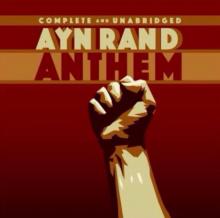 Anthem
Anthem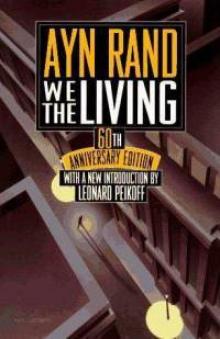 We the Living
We the Living Atlas Shrugged
Atlas Shrugged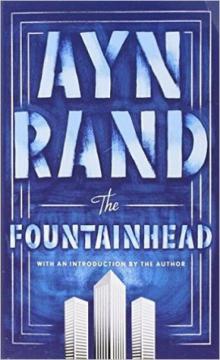 The Fountainhead
The Fountainhead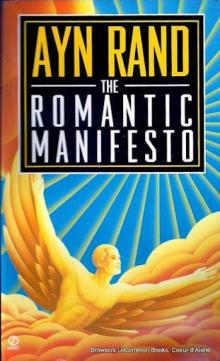 The Romantic Manifesto: A Philosophy of Literature
The Romantic Manifesto: A Philosophy of Literature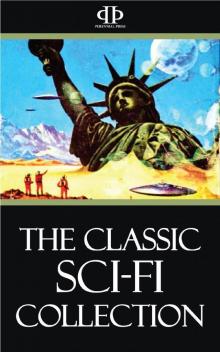 The Classic Sci-Fi Collection
The Classic Sci-Fi Collection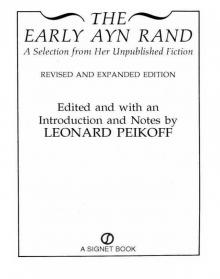 The Early Ayn Rand
The Early Ayn Rand